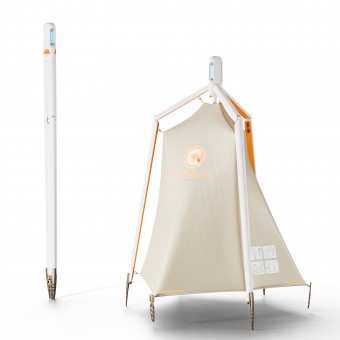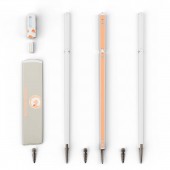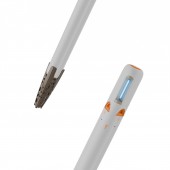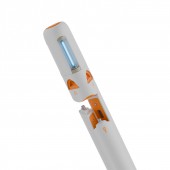DESIGN NAME:
Grubroots
PRIMARY FUNCTION:
Insect Farming Kit
INSPIRATION:
Inspired by the challenge of combating malnutrition and the need for sustainable environmental practices in African communities, GrubRoots emerged. The concept was fueled by local insect consumption traditions and the ecological potential of recycling forestry waste into food. We aimed to merge indigenous knowledge with modern technology to provide a sustainable, self-sufficient food source, harnessing the nutritional benefits of beetles and mushrooms, thus fostering a circular economy.
UNIQUE PROPERTIES / PROJECT DESCRIPTION:
GrubRoots distinguishes itself by integrating sustainable insect farming with community empowerment in African settings. This innovative kit transforms forestry waste into a thriving ecosystem for cultivating nutrient-rich beetles and mushrooms, addressing malnutrition and environmental degradation. Its user-friendly design, tailored for ease of use by women and children, promotes inclusivity and education. By leveraging bioengineering and local ecological knowledge, GrubRoots offers a scalable, eco-friendly solution, embodying a unique approach to food security and sustainability.
OPERATION / FLOW / INTERACTION:
GrubRoots is designed for simplicity, making it easy for anyone to use. Users unfold the kit and set it up in a few straightforward steps, similar to assembling a basic household item. Adding beetle attractants and mushroom spores begins the cultivation process. Interaction with the kit is minimal, mostly involving observation as the beetles and mushrooms grow, transforming waste into a valuable food source. This process is both educational and practical, providing a sustainable solution to malnutrition and waste management with little effort required from the user.
PROJECT DURATION AND LOCATION:
The project started in October 2023 in Wuhan and finished in February 2024 in Wuhan
FITS BEST INTO CATEGORY:
Idea and Conceptual Design
|
PRODUCTION / REALIZATION TECHNOLOGY:
GrubRoots leverages advanced 3D printing for precise prototyping, crafted from sustainable biodegradable materials to minimize environmental impact. Bioengineering techniques optimize the cultivation of beetles and mushrooms, utilizing pheromone attractants and spore integration within a modular design. This approach ensures resource efficiency and adaptability to local environments. The production process emphasizes scalability and local manufacturability, aligning with sustainable practices and community empowerment goals.
SPECIFICATIONS / TECHNICAL PROPERTIES:
Product dimensions: Width 50mm * Height 1133mm.
TAGS:
sustainable agriculture, insect farming, community empowerment, food security, ecological design, waste-to-resource, nutrition enhancement, African communities, beetle cultivation, mushroom production
RESEARCH ABSTRACT:
Our project employed ethnographic and participatory design research to address malnutrition in African communities. Through surveys, interviews, and workshops with locals, including women and children, we identified a need for sustainable food sources. This led to the development of GrubRoots, a system turning forestry waste into food, showcasing a significant societal impact by improving nutrition, supporting local economies, and contributing to environmental sustainability.
CHALLENGE:
Integrating GrubRoots into African communities posed significant challenges, blending innovation with traditional practices and navigating legal and technological constraints. Achieving a balance between usability and sustainability, while ensuring the solution was culturally appropriate and environmentally beneficial, required iterative design and extensive collaboration with locals. Overcoming these obstacles involved adapting to local resources, regulations, and social dynamics, culminating in a product that effectively addresses malnutrition and waste management.
ADDED DATE:
2024-02-25 05:05:52
TEAM MEMBERS (7) :
Qianning Li, Zichen Dai , Wenke Sun, Yuan Yi, Xinran Dong, Haojie Wu and Shiyulu Wang
IMAGE CREDITS:
Jinsong Zhao, 2023.
|









